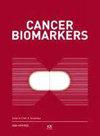13基因组对多发性骨髓瘤预后价值的综合分析
IF 2.2
4区 医学
Q3 ONCOLOGY
引用次数: 0
摘要
背景:尽管多发性骨髓瘤(MM)有多种治疗方法,但MM患者仍然无法避免疾病的复发和加重。目的:构建基于MM预后密切相关基因的风险模型,预测其预后价值。方法:采用基因功能富集和信号通路富集分析、最小绝对收缩和选择算子(LASSO)回归分析、单因素和多因素Cox回归分析、Kaplan-Meier (KM)生存分析和受试者工作特征(ROC)分析鉴定MM的预后基因特征。最后,使用Gene Expression Omnibus (GEO)数据库对预后基因特征进行验证。结果:通过单因素Cox分析和LASSO回归分析筛选出13个预后基因。多因素Cox分析显示,风险评分是MM患者预后的独立因素[危险比(HR) = 2.564, 95%可信区间(CI) = 2.223-2.958, P<0.001]。经ROC分析,风险评分具有较高的预测价值,曲线下面积(AUC)为0.744。结论:评估了13个基因的潜在预后特征,并构建了与MM患者预后显著相关的风险模型。本文章由计算机程序翻译,如有差异,请以英文原文为准。
Comprehensive analysis of thirteen-gene panel with prognosis value in Multiple Myeloma
BACKGROUND: Although there are many treatments for Multiple myeloma (MM), patients with MM still unable to escape the recurrence and aggravation of the disease. OBJECTIVE: We constructed a risk model based on genes closely associated with MM prognosis to predict its prognostic value. METHODS: Gene function enrichment and signal pathway enrichment analysis, Least Absolute Shrinkage and Selection Operator (LASSO) regression analysis, univariate and multivariate Cox regression analysis, Kaplan-Meier (KM) survival analysis and Receiver Operating Characteristic (ROC) analysis were used to identify the prognostic gene signature for MM. Finally, the prognostic gene signature was validated using the Gene Expression Omnibus (GEO) database. RESULTS: Thirteen prognostic genes were screened by univariate Cox analysis and LASSO regression analysis. Multivariate Cox analysis revealed risk score to be an independent prognostic factor for patients with MM [Hazard Ratio (HR) = 2.564, 95% Confidence Interval (CI) = 2.223–2.958, P< 0.001]. The risk score had a high level of predictive value according to ROC analysis, with an area under the curve (AUC) of 0.744. CONCLUSIONS: The potential prognostic signature of thirteen genes were assessed and a risk model was constructed that significantly correlated with prognosis in MM patients.
求助全文
通过发布文献求助,成功后即可免费获取论文全文。
去求助
来源期刊

Cancer Biomarkers
ONCOLOGY-
CiteScore
5.20
自引率
3.20%
发文量
195
审稿时长
3 months
期刊介绍:
Concentrating on molecular biomarkers in cancer research, Cancer Biomarkers publishes original research findings (and reviews solicited by the editor) on the subject of the identification of markers associated with the disease processes whether or not they are an integral part of the pathological lesion.
The disease markers may include, but are not limited to, genomic, epigenomic, proteomics, cellular and morphologic, and genetic factors predisposing to the disease or indicating the occurrence of the disease. Manuscripts on these factors or biomarkers, either in altered forms, abnormal concentrations or with abnormal tissue distribution leading to disease causation will be accepted.
 求助内容:
求助内容: 应助结果提醒方式:
应助结果提醒方式:


